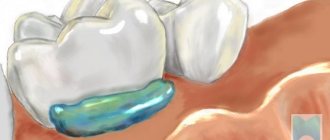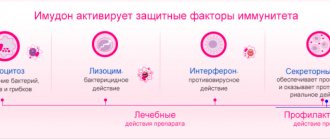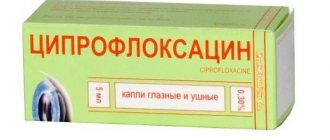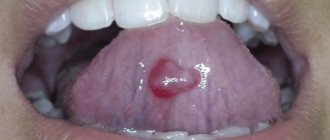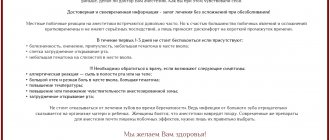SCANDINIBS
Local anesthetic for use in dentistry
Pharmacokinetics
When administered into the tissues of the maxillofacial area through conduction or infiltration anesthesia, the Cmax of mepivacaine in blood plasma is achieved approximately 30 minutes after the injection. The half-life (T1/2) is long and is approximately 90-120 minutes.
Mepivacaine is metabolized quite quickly and only 5-10% is excreted unchanged through the kidneys.
Having an amide structure, mepivacaine is not metabolized by plasma esterases. Most of the anesthetic and its metabolites are eliminated by the liver after 30 hours. In case of liver pathology (cirrhosis, hepatitis), accumulation of mepivacaine is possible.
Dosage
The amount of solution and the total dose depend on the type of anesthesia and the nature of the surgical intervention or manipulation.
The average single dose is 1.8 ml (1 cartridge).
Maximum dose for:
- adults and children weighing more than 30 kg - 5.4 ml;
- children weighing 20-30 kg - 3.6 ml;
- children weighing less than 20 kg - 1.8 ml.
The maximum daily dose of mepivacaine is 4.0 mg/kg body weight, but not more than 320 mg.
Side effects can occur with accidental extravascular administration or with increased absorption, that is, with resorption from inflamed or highly vascularized tissue, as well as with hypersensitivity to the drug, and are characterized by the following symptoms:
From the central nervous system: dizziness, headache, drowsiness, weakness, motor restlessness, impaired consciousness, up to loss of consciousness, shock, convulsions, trismus, tremor, visual and hearing impairment, diplopia, dilated pupils, nystagmus, paralysis of the legs, paresthesia , violation of motor and sensory functions (in dentistry - insensitivity and paresthesia of the lips and tongue).
From the vascular system: a sharp drop in blood pressure, tachycardia or bradycardia (including fetal bradycardia), in some cases turning into atrioventricular block, collapse (peripheral vasodilation), arrhythmia, chest pain.
From the urinary system: involuntary urination.
From the digestive system: nausea, vomiting, involuntary bowel movements.
From the respiratory system: dyspnea, apnea.
Blood disorders: methemoglobinemia.
Local reactions: swelling and inflammation at the injection site.
Allergic reactions: skin itching and skin rash, angioedema, other anaphylactic reactions (including anaphylactic shock) and urticaria are extremely rare.
If serious adverse reactions occur, it is necessary to immediately ensure the maintenance of respiratory function, if possible with the use of oxygen, monitoring of pulse and blood pressure is necessary.
For frequent convulsions, it is necessary to additionally administer diazepam.
In case of shock, the patient must be placed in the supine position, provided with oxygen, and given IV fluid therapy using antishock drugs.
Pregnancy and lactation
During pregnancy, local anesthesia is considered the safest method for relieving pain during dental procedures. Scandinibsa does not affect the course of pregnancy. However, as with any therapy, it is necessary to evaluate the benefit to the mother and the risk to the fetus, especially in the first trimester of pregnancy.
Prescribe with caution during childbirth.
Mepivacaine does not pass into breast milk in any significant quantities, since when used during dental procedures it is administered in small doses, which are quickly metabolized and eliminated. If it is necessary to use the drug during lactation, it is necessary to balance the benefits for the mother and the risk for the baby.
Use in childhood
Contraindicated in children under 4 years of age.
With caution: children (over 4 years).
For impaired renal function
Use the drug with caution in case of renal failure.
For liver dysfunction
It is prohibited to use the drug for severe liver diseases: cirrhosis, hereditary or acquired porphyria.
With caution: conditions accompanied by a decrease in hepatic blood flow (including liver disease).
Side effects
From the central and peripheral nervous system: headache, dizziness, drowsiness, weakness, motor restlessness, disturbances of consciousness, up to its loss, convulsions, trismus, tremor, visual and auditory disturbances, loss of vision, blurred vision, diplopia, nystagmus, cauda equina syndrome (leg paralysis, paresthesia), motor and sensory block.
From the cardiovascular system: decreased blood pressure, collapse (peripheral vasodilation), bradycardia, arrhythmias, chest pain.
From the urinary system: involuntary urination.
From the digestive system: nausea, vomiting, involuntary bowel movements.
From the respiratory system: shortness of breath, apnea.
Allergic reactions: skin itching, skin rash, angioedema, other anaphylactic reactions (including anaphylactic shock), urticaria (on the skin and mucous membranes).
Other: hypothermia, decreased potency; during anesthesia in dentistry: insensitivity and paresthesia of the lips and tongue, prolongation of anesthesia, fetal bradycardia.
Local reactions: swelling and inflammation at the injection site.
Use of Scandonest in dentistry for pain relief
Painkillers are actively used in medical practice to relieve pain. Scandonest belongs to the group of local anesthetics. The drug is used in dentistry and gynecology during planned operations on patients with adrenaline intolerance.
Description of the drug
Scandonest without adrenaline is produced in blisters of 10 ampoules each. The drug is intended for professional use and is administered by injection into soft tissue.
Compound:
- mepivacaine hydrochloride;
- sodium hydroxide;
- sodium chloride;
- saline solution
The active ingredient of Scandonest is mepivacaine hydrochloride, the action of which is aimed at blocking the nerve impulses responsible for pain. Unlike other painkillers, Scandonest is characterized by a vasoconstrictor effect. This is radically opposite to the effect of medications that dilate the lumen of blood vessels.
Note! Scandonest is used for pain relief in patients for whom adrenaline is contraindicated.
The anesthetic effect lasts at least 30 minutes and occurs 3-4 minutes after administration of the drug. After 1.5 hours, the drug is partially eliminated from the body. However, it should be borne in mind that no more than 10% of the drug is excreted by the kidneys; the liver takes the brunt. Therefore, any pathological changes in the liver can lead to problems.
Note! When using local anesthetics, the patient remains conscious and responds adequately to the situation.
The result of using Scandonest is loss of sensitivity to pain. There is not even any unpleasant sensation. Before administering the medicine, the dentist freezes the area so that there is no discomfort during the injection. After the drug begins to act, therapy takes place in a calm environment.
Application in pediatric dentistry
Scandonest is used in pediatric dentistry, as it provides 100% pain relief and does not cause negative side effects.
This is especially true for young patients under five years of age for whom adrenaline is contraindicated.
After the age of five, children can be treated for pain with drugs containing adrenaline, for example, Ultracain DS. The dosage of the medicine corresponds to the age of the small patient.
The dentist’s work with the child should be carried out with the child’s complete trust in the doctor. After pain relief, the child gains confidence in the dentist and allows the necessary therapy to be carried out.
Indications and contraindications
Scandonest is widely used in dentistry for the treatment and extraction of teeth, surgical manipulations on the oral mucosa, and during operations on the jaw.
Absolute contraindications:
- intolerance to the ingredients of the drug;
- severe diseases of internal systems;
- pathology of hemoglobin formation (porphyria);
- muscle weakness (myasthenia gravis);
- children under five years of age.
Relative contraindications:
- pregnancy and breastfeeding;
- renal/liver failure;
- cardiovascular pathology;
- elderly patients over 65 years of age;
- inflammatory processes at the injection site.
The dosage of the medication depends on the age of the patient and the nature of the treatment procedures. For patients over 65 years of age, the dose of administration is half the usual dose.
Scandonest during pregnancy is prescribed with great caution after the approval of the gynecologist. The active substance is easily absorbed by the placenta and penetrates into the fetus. When feeding, you need to take into account the time it takes for the substance to be removed from the body. The active ingredients can pass into breast milk, but in small quantities.
Side effects
Any medicinal substance can cause negative effects of varying severity. In the case of using Scandonest, these may be reactions of different body systems.
CNS:
- drowsiness and lethargy;
- motor impairment;
- failure of tactile sensations;
- dizziness, headache;
- excessive excitability, anxiety;
- trembling of limbs;
- dilated pupils;
- loss of consciousness.
Vascular system:
- arrhythmia, tachycardia;
- decrease in pressure;
- bradycardia;
- pain in the sternum.
The patient may experience nausea and vomiting, fecal and urinary incontinence, and respiratory depression. In some cases, allergy symptoms may occur - hives, itching, rashes, swelling at the injection site.
Numbness and a cold feeling at the injection site (as well as the lips and tongue) are common symptoms. Severe side effects include the patient's state of shock.
Important! The appearance of side effects requires qualified medical care.
Scandonest slows down motor reactions, so after use it is not recommended to drive a vehicle or work with equipment that requires concentration and precise movements.
Precautions
To avoid allergic reactions, it is recommended to do a test test by injecting a small volume of the drug - 5%.
Patients should not eat or chew gum until tissue sensation is fully restored. There is a certain risk of biting your lip, cheek or tongue.
Analogs
Analogues of the drug Scandonest contain one or more substances with identical effects. The following substitutes are used in medical practice:
- Isocaine;
- Mepivacaine;
- Mepivastezin;
- Mepidont;
- Mepicaton;
- Scandinips;
- Ultracaine DS;
- Articaine.
Isocaine
Isocaine, produced in Canada, is a local anesthetic medicine for blocking pain. The active ingredient is mepivacaine. The medicine is produced in injection ampoules intended for professional use. For local anesthesia, a 3% solution of the drug is administered, the dosage depends on the nature of the intervention.
Mepivacaine
Mepivacaine is a synonym for Scandonest, fully consistent with its composition and action. The drug is less toxic than lidocaine and also less effective.
Mepivacaine is not recommended for use in patients with poor blood clotting. During soft tissue surgery, severe blood loss is possible, which can only be stopped by vasoconstrictor adrenaline.
In some cases, patients are prescribed blood thinners several days before receiving Mepivacaine.
Mepivastezin
Mepivastezin is a drug for submucosal injection used in dentistry and for surgical interventions. The drug has local anesthetic and immunomodulatory effects. The active substance is mepivacaine.
Mepivastezin is not recommended for use in patients with poor health or with severe kidney/liver pathologies.
The drug is not recommended for use in early pregnancy due to its toxic effect on the fetus; breastfeeding can be continued one day after administration of the drug dose.
Mepidont
Mepidont is produced in Italy. This is a complex drug that contains mepivacaine and epinephrine. Epinephrine has a constricting effect on blood vessels and enhances the properties of mepivacaine.
The drug is intended for professional use; prior consultation with a doctor is required before administration. Side effects are similar to other drugs based on mepivacaine, and allergic reactions are possible.
Mepidont does not combine well with some medications, so on the eve of treatment the use of medications should be discontinued.
Scandinibsa
Scandinibsa, produced in Spain, based on mepivacaine, has local anesthetic properties and is administered by injection into soft tissue. Mepivacaine enhances the healing properties of other drugs that block the sensitivity of the central nervous system.
Side effects occur due to sensitivity to the substances that make up the drug. In case of severe side effects syndrome, medical assistance should be provided.
Eating is allowed only after the sensitivity of the nerve endings has been restored.
Ultracaine
Ultracaine is often used for treatment in the dental office. This drug does not cause significant side effects or contraindications.
With the help of Ultracaine, a wide variety of dental procedures are performed, the patient does not feel pain. The drug is also used in pediatric dentistry, but after the age of four.
Important! Ultracaine is approved for use by pregnant women, but with the permission of a gynecologist.
The drug contains adrenaline, but in very small quantities. Ultracaine can be used to relieve pain in patients with high blood pressure and cardiovascular pathologies. In case of severe pain, the dosage of the drug may be increased.
Dentists give advantages to Ultracaine, which is several times greater than the effect of Lidocaine. The analgesic effect lasts a minimum of 20 minutes and can last up to 40 minutes. Ultracaine forte anesthetizes tissue within 1 hour 15 minutes.
Bottom line
Tooth extraction, removal of pulpitis and operations on soft tissues of the oral cavity should be carried out under local anesthesia.
Scandonest in dentistry is a new generation anesthetic based on mepivacaine, which does not contain adrenaline.
It can be administered to patients sensitive to the effects of adrenaline and who have contraindications to the use of lidocaine. This drug is also used in gynecology and in the treatment of other diseases.
- Colgate 32%, 18183 votes18183 votes 32%18183 votes – 32% of all
- Splat 24%, 1359613596 24%13596 – 24% of all
- ROCS 16%, 91259125 16%9125 – 16% of all
- Sensodyne 11%, 63006300 11%6300 – 11% of all
- New pearls 10%, 5931 votes5931 votes 10%5931 votes – 10% of all
- President 6%, 3433 votes3433 votes 6%3433 votes – 6% of all
Source: https://CreateSmile.ru/skandonest/
Scandonest: instructions for use in dentistry, price, composition, analogues and reviews
Many people associate visiting dental offices with unpleasant pain. This problem is especially acute when performing manipulations in children. However, in the vast majority of cases, these fears are unfounded, since modern clinics use various pain relief techniques.
The drug Scandonest, according to the instructions for use, is indicated and effective for use in dentistry for infiltration and conduction anesthesia for persons of all age categories.
General information about the drug
When performing dental procedures, there is a need for local pain relief. To do this, an anesthetic is injected into the nerve exit site to eliminate sensitivity and block the transmission of nerve impulses. The choice of drug is influenced by the speed of onset of a pronounced effect, the absence of numbness of the mucous membranes, and the absence of discomfort during the administration of the anesthetic.
Drug group, INN, scope of application
In accordance with the latest revision of the Anatomical Therapeutic Classification of Medicines, the drug Scandonest is the trade name of the drug Mepivacaine. The manufacturer is French, which is a leader in the production of consumables for the dental industry, in particular, local anesthesia products.
Composition and properties of the drug
Scandonest is a fast-acting local anesthetic. It is widely used not only when performing such common dental procedures as tooth extraction or filling, but also when performing more serious manipulations in the oral cavity.
Release forms and prices for the drug, average in Russia
Scandonest is produced in the form of an injection solution, the concentration of the active substance is 3%. One cartridge contains 1.8 ml of solution, which is equivalent to 54 mg of mepivacaine.
Each glass cartridge has a butyl rubber stopper on both sides and an aluminum cap. One blister contains 10 or 20 cartridges.
Available in packs of 20, 30, 40, 50, 60, 80, 100, 120 pieces.
The average price for Scandonest is higher than other local painkillers, and differs depending on the size of the package and the pharmacy chain.
Number of cartridges per package Moscow (rub.) St. Petersburg (rub.)
| 20 | 1487-1569 | 1524-1548 |
| 30 | 2121-2241 | 2150-2301 |
| 50 | 3726-3854 | 3674-3714 |
| 80 | 5920-5987 | 5890-5980 |
| 120 | 8879-9954 | 8560-8930 |
Composition and pharmacological properties
The main substance that has an active effect is mepivacaine hydrochloride, 54 mg in one cartridge. Water for injection is used as a solvent. Also, to stabilize the solution, Scandonest contains excipients such as sodium hydroxide and sodium chloride. sodium – no more than 24 mg, which eliminates electrolyte imbalance in the blood.
Mepivacaine has a rapid and strong effect when used for terminal, conduction and infiltration anesthesia. This substance belongs to amides and has weak lipophilic properties.
Scandonest action
The mechanism of action is associated with blocking voltage-gated sodium channels at the endings of sensory nerves, as a result of which the threshold for electrical stimulation of the nerve increases and the occurrence of the action potential is significantly slowed down. Depolarization of the membrane becomes impossible, the impulse is not carried along the nerve fiber. The loss of sensitivity is temporary, after the end of the drug’s action, the nerve function is completely restored.
Mepivacaine has no effect on blood vessels, which allows it to be used without additional administration of vasoconstrictors, therefore Scandonest is the drug of choice for people with a history of cardiovascular disease (hypertension, coronary heart disease, diabetes mellitus, heart attack or stroke).
The action begins 3-4 minutes after administration of the drug, the duration of the analgesic effect depends on the type of anesthesia, the equipment used for its administration, the dose of the drug, as well as on the individual characteristics of the body. After metabolism in the liver, it is excreted by the kidneys in the urine. The half-life averages 90 minutes.
Instructions for use
The route of administration of the drug is exclusively injection using special reusable cartridge syringes. Before use, the rubber stopper with an aluminum cap must be pierced with a sterile needle. When administering, be sure to ensure that the needle is inserted into soft tissue and not into blood vessels to avoid mepivacaine entering the systemic circulation.
To do this, after puncturing the skin or mucous membrane, you need to pull the piston towards yourself; the absence of blood indicates that the injection was correct. The rate of administration of this medication should not exceed 1 cartridge per minute. An open cartridge cannot be stored.
The dosage of the drug depends on several factors:
- patient weight;
- individual pain sensitivity;
- type of anesthesia, technique of its administration;
- the degree of innervation and vascularization of the area to be anesthetized;
- duration of surgery.
When performing standard dental procedures, 2-4 ml of a 3% solution (2 cartridges) is usually sufficient. Within 2 hours, for an adult with an approximate body weight of 75 kg, no more than 6 ml of the drug can be administered. The maximum daily dose in this case is 10 ml.
In elderly patients, use half the dosage. Also, a dose reduction may be required for persons suffering from coronary heart disease, atherosclerosis, renal and liver failure.
The initial dose for a child is 0.5 ml of a 3% solution, which is 0.025 ml/kg. If necessary, it can be increased to 2 ml (0.1 ml/kg).
The effect of Scandonest can be enhanced by the following groups of drugs:
- vasoconstrictors (Adrenaline, Epinephrine, Methoxamine, Norepinephrine);
- cholinesterase inhibitors (Rivastigmine, Ipidacrine).
Concept of vasoconstrictors
Calcium channel blockers, ACE inhibitors, beta blockers enhance the negative effect of mepivacaine on the conduction system of the heart.
Carrying out anesthesia with Scandonest while taking anticoagulants (Warfarin, Sincumar, Dicumarin) may be complicated by bleeding, while taking monoamine oxidase inhibitors (Iproniazid, Phenelzine, Pyrazidol) may be complicated by hypotension. Athletes may test positive for doping tests within 24 hours after mepivacaine administration.
Possible side effects and overdose
Usually the drug is well tolerated. Side effects occur in the following cases:
- incorrect dosage;
- entry of the drug into the systemic circulation;
- individual intolerance to any component.
Undesirable systemic effects include:
- dizziness;
- tinnitus;
- pulsation in temples;
- darkening of the eyes;
- arrhythmia;
- hypotension;
- feeling of heaviness in the stomach, nausea
- bronchospasm;
- anaphylactic shock.
Local allergic reactions in the form of itching, urticaria, redness and inflammation at the injection site are much easier to tolerate and can be controlled by taking antihistamines.
An overdose can cause convulsions, loss of consciousness, and anaphylactic shock. In such cases, it is necessary to provide timely assistance with the administration of medications.
Within 12 hours after using Scandonest, it is necessary to limit driving and other activities that require increased concentration of attention due to a possible inhibitory effect on reaction speed.
Indications for use
for carrying out infiltration, conduction, intraligamentary, intraosseous and intrapulpal anesthesia during surgical and other painful interventions in dentistry.
Scandinibsa does not have a vasoconstrictor component, which allows it to be used in patients with cardiovascular pathology, diabetes mellitus, and angle-closure glaucoma.
Dosage
The amount of solution and the total dose depend on the type of anesthesia and the nature of the surgical intervention or manipulation.
The average single dose is 1.8 ml (1 cartridge).
Maximum dose for:
adults and children weighing more than 30 kg - 5.4 ml; children weighing 20-30 kg - 3.6 ml; children weighing less than 20 kg - 1.8 ml.
The maximum daily dose of mepivacaine is 4.0 mg/kg body weight, but not more than 320 mg.
Side effect
Side effects can occur with accidental extravascular administration or with increased absorption, that is, with resorption from inflamed or highly vascularized tissue, as well as with hypersensitivity to the drug, and are characterized by the following symptoms:
From the central nervous system: dizziness, headache, drowsiness, weakness, motor restlessness, impaired consciousness, up to loss of consciousness, shock, convulsions, trismus, tremor, visual and hearing impairment, diplopia, dilated pupils, nystagmus, paralysis of the legs, paresthesia , violation of motor and sensory functions (in dentistry - insensitivity and paresthesia of the lips and tongue).
From the vascular system: a sharp drop in blood pressure, tachycardia or bradycardia (including fetal bradycardia), in some cases turning into atrioventricular block, collapse (peripheral vasodilation), arrhythmia, chest pain.
From the urinary system: involuntary urination.
From the digestive system: nausea, vomiting, involuntary bowel movements.
From the respiratory system: dyspnea, apnea.
Blood disorders: methemoglobinemia.
Local reactions: swelling and inflammation at the injection site.
Allergic reactions: skin itching and skin rash, angioedema, other anaphylactic reactions (including anaphylactic shock) and urticaria are extremely rare.
If serious adverse reactions occur, it is necessary to immediately ensure the maintenance of respiratory function, if possible with the use of oxygen, monitoring of pulse and blood pressure is necessary.
For frequent convulsions, it is necessary to additionally administer diazepam.
In case of shock, the patient must be placed in the supine position, provided with oxygen, and given IV fluid therapy using antishock drugs.
Contraindications
hypersensitivity to mepivacaine (including other local anesthetic drugs of the amide type); severe myasthenia; severe liver diseases: cirrhosis, hereditary or acquired porphyria; children under 4 years of age.
With caution: conditions accompanied by a decrease in hepatic blood flow (for example, chronic heart failure, diabetes mellitus, liver disease); progression of cardiovascular failure; inflammatory diseases or infection of the injection site; pseudocholinesterase deficiency; renal failure; hyperkalemia; acidosis; old age (over 65 years); children's age (over 4 years); during childbirth; during pregnancy.
Use during pregnancy
During pregnancy, local anesthesia is considered the safest method for relieving pain during dental procedures. Scandinibsa does not affect the course of pregnancy. However, as with any therapy, it is necessary to evaluate the benefit to the mother and the risk to the fetus, especially in the first trimester of pregnancy.
Prescribe with caution during childbirth.
Mepivacaine does not pass into breast milk in any significant quantities, since when used during dental procedures it is administered in small doses, which are quickly metabolized and eliminated. If it is necessary to use the drug during lactation, it is necessary to balance the benefits for the mother and the risk for the baby.
